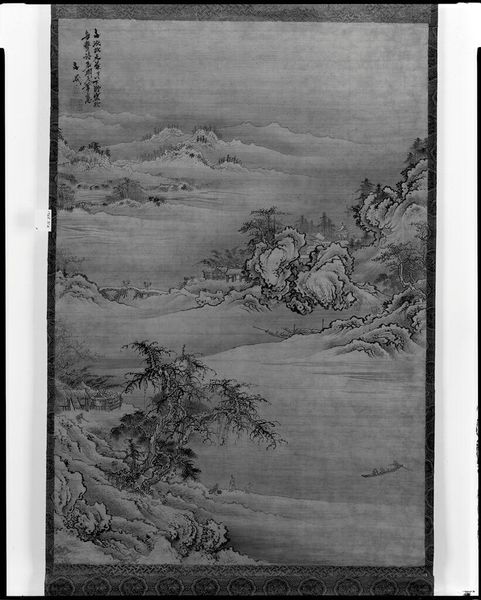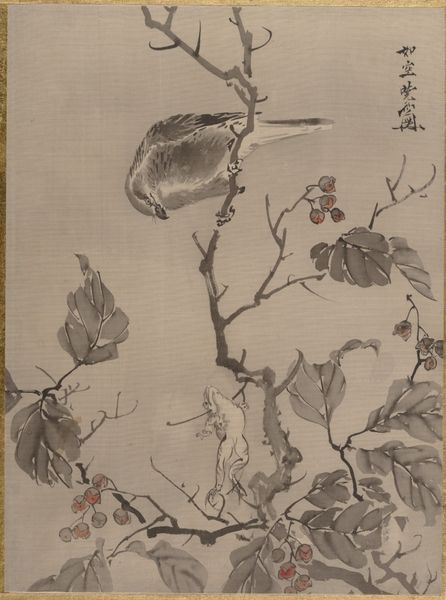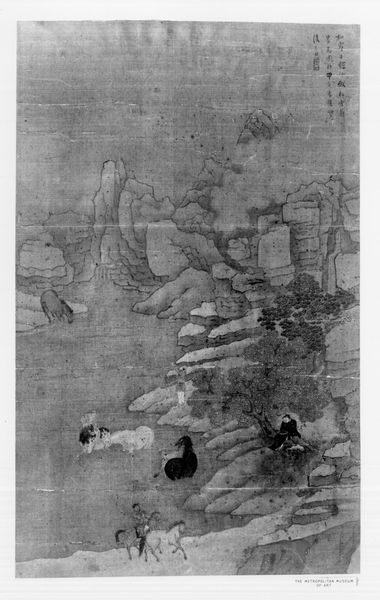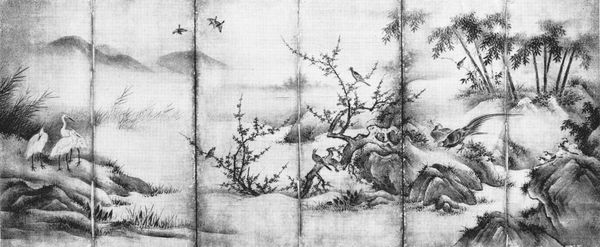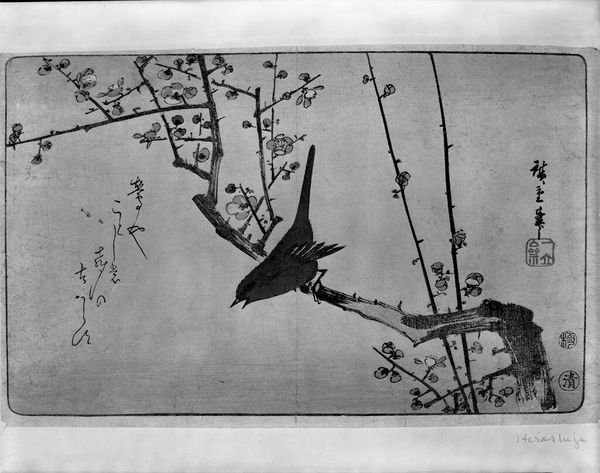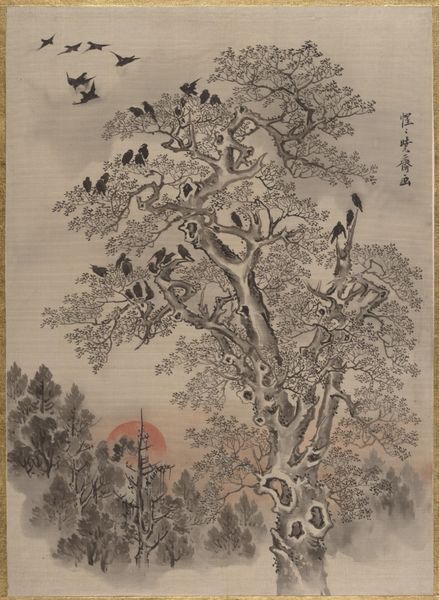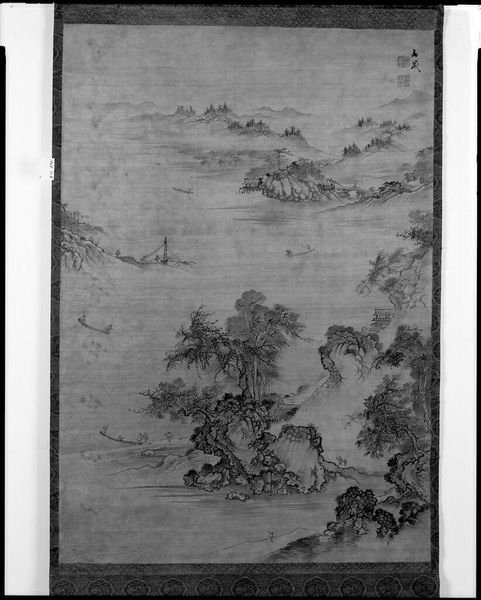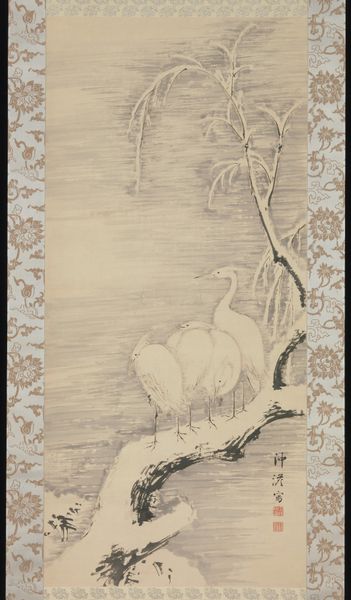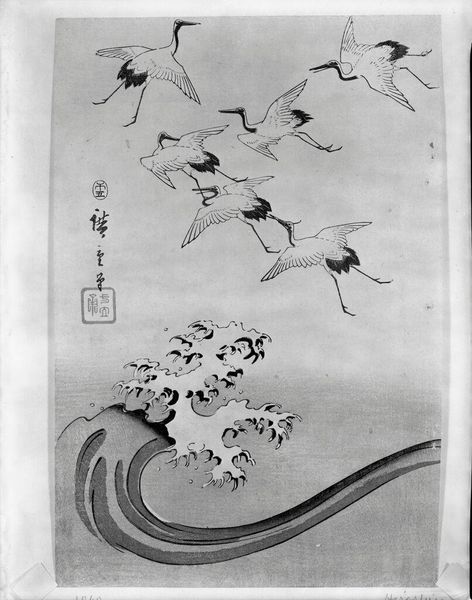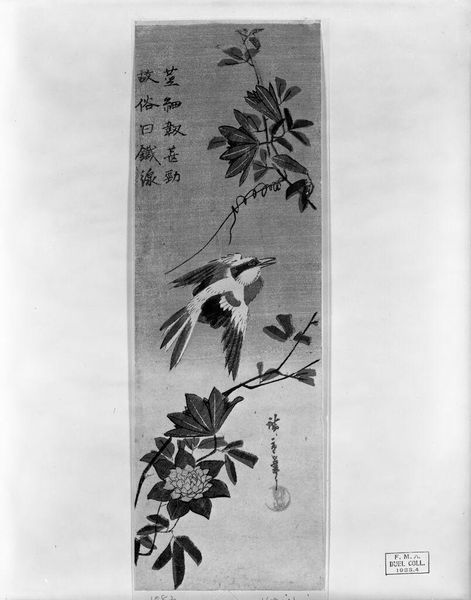
tempera, silk, painting
#
tree
#
tempera
#
silk
#
painting
#
asian-art
#
landscape
#
bird
#
flower
#
figuration
#
orientalism
#
china
Dimensions: Image: 37 × 42 1/4 in. (94 × 107.3 cm) Overall with mounting: 90 1/4 in. × 51 in. (229.2 × 129.5 cm) Overall with knobs: 90 1/4 × 52 3/8 in. (229.2 × 133 cm)
Copyright: Public Domain
Curator: Welcome. We’re standing before Shen Quan’s “Flowering Crabapple and Pair of Birds,” a tempera on silk painting from 1744, residing here at the Metropolitan Museum of Art. Editor: The initial impression is one of elegant stillness. The birds seem poised, listening intently amongst the blossoms. The pale palette lends it an air of quiet contemplation. Curator: It is interesting to think about the material value here, silk and tempera in mid-18th century China, their production involving numerous artisans. Beyond the artistic skill, the painting also speaks to wealth and patronage. These materials would have been a luxury. Editor: Absolutely, and look at the composition itself. The artist balances the negative space with the densely flowered branches, guiding the viewer's eye through the image. The very materiality, the texture of the silk support, seems integrated into the formal design, creating a subtle depth. Curator: Indeed. This painting reveals Shen Quan’s engagement with techniques valued within specific social circles and trade networks of the time. Consider the symbolism. Birds often represented marital bliss and flowers stand for beauty. How might these themes intersect with the contemporary social norms around courtship? Editor: Symbolism is key, but so is the sheer formal arrangement. The artist deftly employs asymmetry to create dynamic balance. See how the rock formation on the right anchors the composition while the branches reach across to meet it? It’s more than symbolic; it’s a feat of design. Curator: The socio-economic structures in place defined artistic opportunities. An artist dependent on courtly patronage crafted work aligning with specific ideological agendas. Editor: And that understanding of cultural context undeniably shapes my interpretation, but also it cannot fully encapsulate the beauty created. I mean, look at the brushwork in those flower petals! It’s exquisite! The quality persists beyond its making and even our ability to talk about the means that enabled the work. Curator: Perhaps, but thinking about production provides context. We both can appreciate how its art-historical lineage, with all of the resources to facilitate it, results in such formal eloquence. Editor: Well said. Thinking through the material history really sharpens the way we see those formal relationships, the techniques themselves that gave us these enduring and affecting images.
Comments
No comments
Be the first to comment and join the conversation on the ultimate creative platform.

